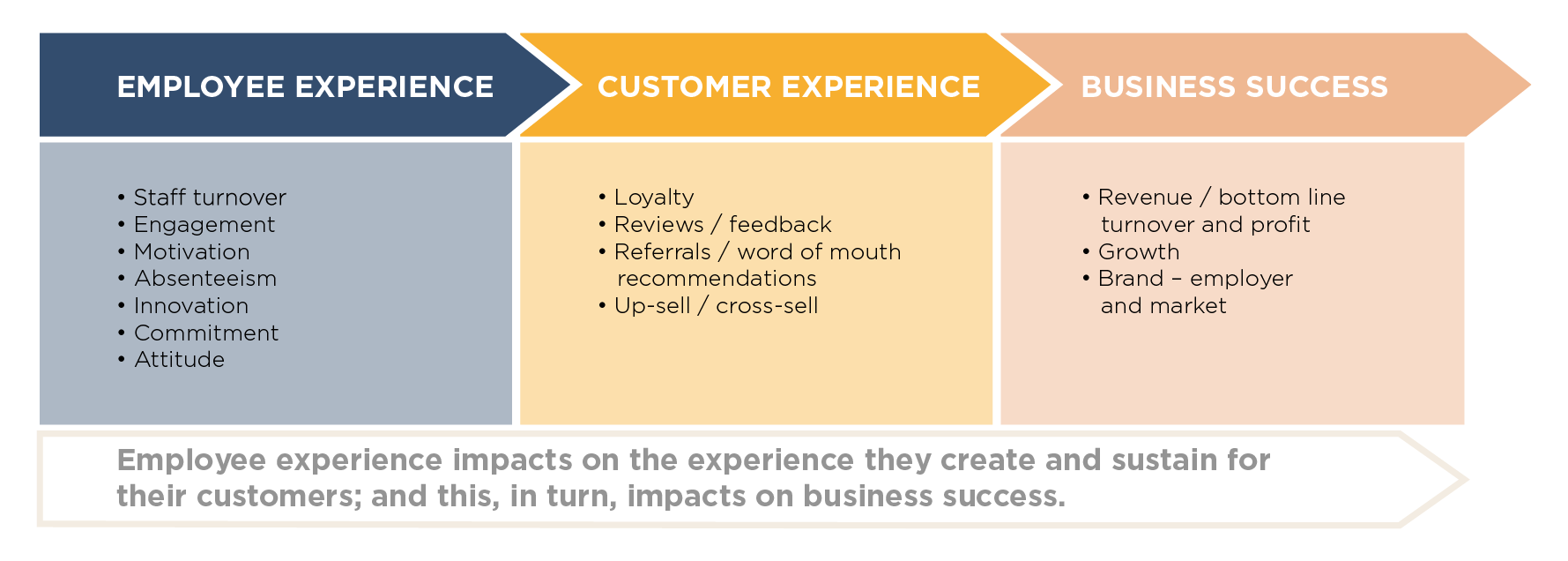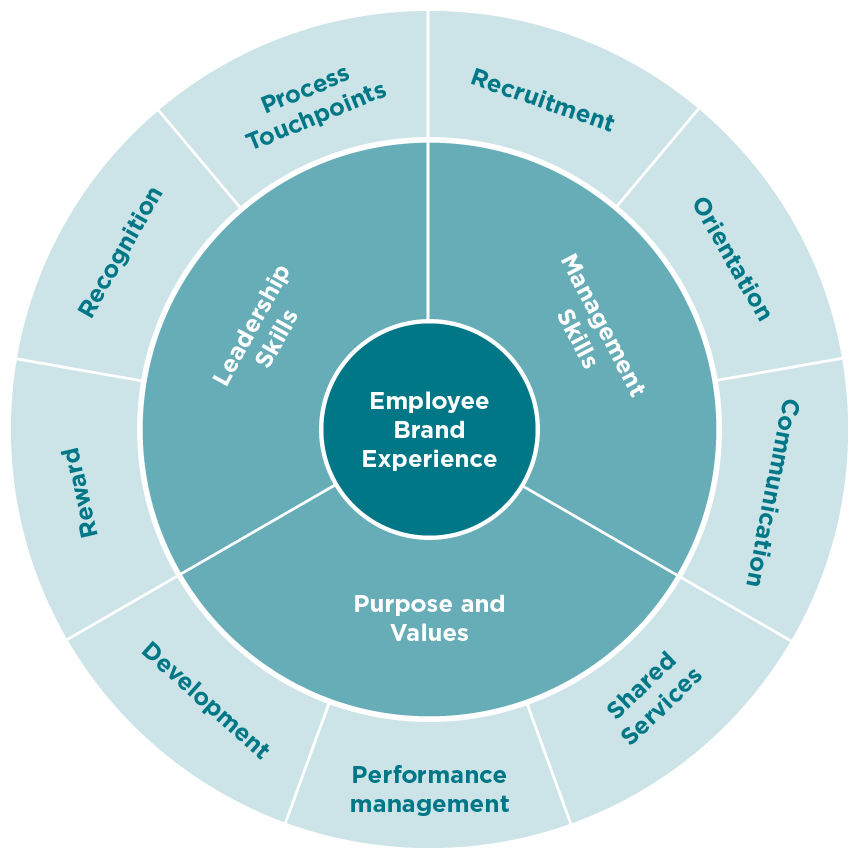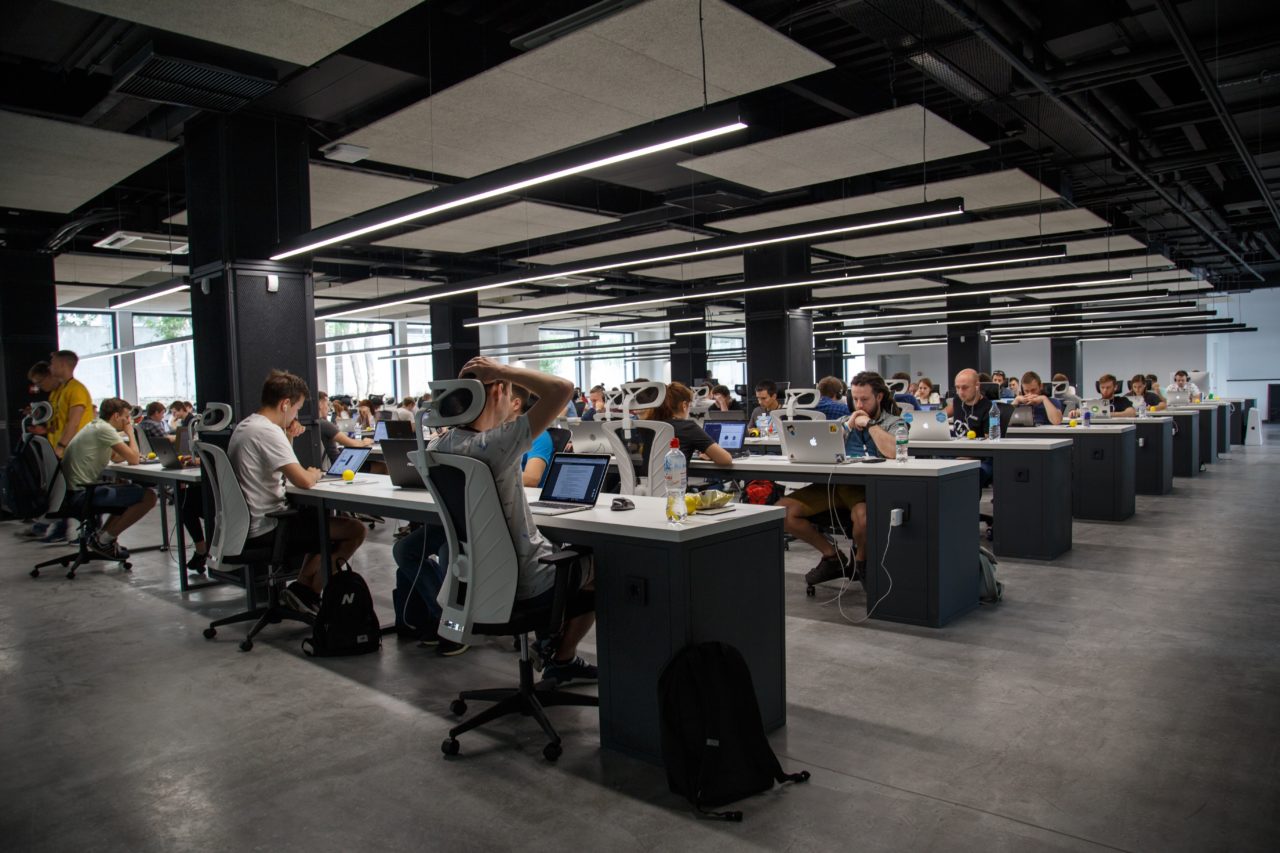It can not only help attract and retain talent in a competitive market, but also ensure you fully optimize both individual and collective potential. The experience you deliver for employees, put simply, has a huge impact on how well they, and you as an organization, perform.
For this reason, employees are increasingly being recognized as ‘the new consumer’ by managers worldwide. We no longer operate from a hierarchal viewpoint, where employees were once regarded as a resource to achieve business results: now, employees are an asset. As such, they require – deserve! – continual investment, recognition and reward to satisfy their needs and wants.
The environment and experience we deliver for our people, therefore, can be a key differentiator and form the foundation of a strong employer brand. It can have measurable impact on business results. But how do we go about building and developing a winning employee experience?
Employee experience matters
Before we go to the how, let’s consider the why.
Research increasingly points to a key link behind the employee experience and business outcomes including customer experience, engagement levels and productivity. The Temkin Group report that companies who deliver outstanding customer experiences have one-and-a-half times more engaged employees than those ranking at the lower end of the scale.
(Source: Globoforce, ‘The Employee Experience Index’)
It’s important to make a distinction between the experience we deliver for employees, and employee engagement: their level of commitment to their role and the business as a whole. The two are intrinsically linked, but engagement is not the only benefit to come from investment into employee experience:

Addressing the employee experience is the solution, whereas levels of engagement are an outcome.
Despite this, a survey by IDC found that while 81% of companies listen to customers about their experiences, 69.4% of companies do not measure the employee experience.
Arguably, many organizations already know how to design and improve the employee experience. Thanks to a customer-centric economy, we understand the value and ways to satisfy our consumers; it’s a question of applying those same principles that govern customer experience design to in-house processes and protocols.
Are you looking to address the employee experience of your workplace? We have some top tips to get you started.
1. Start with analytics
Do you understand what the work experience looks like from your employees’ perspective?
The gap between grass roots level employees and those operating in the C suite is a topical subject, particularly in larger or globalized organizations. Increasingly, we are operating from multiple locations, utilizing the gig economy or embracing remote working and telecommuting. The resulting ‘borderless office’ presents a challenge for those operating at management level when trying to identify with, or understand, the day-to-day roles and experiences of employees.
The first step of designing a winning experience, therefore, must be understanding where you currently stand. Determining employee needs, wants and gaining insights should be approached in the same way we seek to gain an understanding of our customers: with data, analytics and measures of impact on business outcomes, alongside quantifiable data including surveys, interviews or focus group conversations. We explore the process of tapping into employee ideas and feedback more fully in our blog, ’10 simple steps to get great ideas from your employees’.
Apply consumer marketing tools and pulse surveys to facilitate bottom-up feedback and conversations from employees. Encourage employees to rate their experience and identify areas for improvement. Analyze results for any trends or common feeling amongst specific groups – for example, are you seeing lower levels of engagement amongst your remotely based employees, because they struggle to feel part of the culture of the business?
With the support of data, you will know what works well; where the gaps or areas of improvement are; what groups or types of employees to target with your efforts. You have the foundation to build a better experience for your staff.
2. Go company-wide – employee experience is not just for HR
The shift in HR practice towards a marketing mindset that focuses on employer branding and redesigning cultures and experiences to attract and retain talent is nothing new. What has yet to catch up is the recognition that HR functions can no longer bear the sole responsibility for shaping employee experience.
Employees have numerous touchpoints and interactions with the modern-day organization. In its report, “Designing employee experience: How a unifying approach can enhance engagement and productivity“, IBM identifies these as the three ‘spheres’ for employee experience: The Social Sphere, The Work Sphere, and The Physical Sphere.
Improving each of these experiences requirements cross-departmental support from all functions, including marketing, IT and facilities management, alongside support from executive level.
Identify the key touchpoints for employees in your organization by looking to the employee life cycle. Remember that employee experiences begin before they even join your organization: they build a perception of you as an employer throughout the recruitment process, responding to your brand presence across your social media channels and website.

Seek out a sponsor or representative from those departments involved in each employee touchpoint, and ensure you have buy-in to create a 360-degree experience. There’s no point in investing time, resource and effort to ensure a fantastic employee experience at the recruitment and onboarding stage, if that perception is going to be undermined by poor facilities, underperforming technology, or badly managed interactions with their line manager. A holistic design approach will ensure you get the results you’re looking for.
3. Look to your technology and tools
Digital tools and technology have transformed the way we interact with others, access information and complete everyday tasks as individuals. When entering the workplace, employees expect the same digital experiences from the tools and platforms they utilize to perform their daily roles.
Applying a digital lens to the employee experience means we must now leverage the latest consumer technologies within a work environment: providing simple, seamless and intuitive tools to maximize their ability to perform well. Tools that don’t perform result in frustration, decreased productivity and an overall dissatisfaction with the work environment.
Investment into cloud-based technologies to enable seamless experiences for remote or agile workforces is key; in addition, considering integration functionality and centralizing the digital workplace can have considerable impact on productivity and satisfaction levels. The average employee uses 5.5 different applications to perform their day-to-day tasks; offering a ‘portal’ that integrates with different applications can streamline access, making a significant impact on user experience.
To connect individuals and teams, communication tools are key: offering interactive platforms or spaces for project management, collaboration and knowledge sharing will also ensure employees have the tools they require to do their jobs well.
Technology shouldn’t be entirely task-orientated, however. Increasingly, we are understanding the value of creating communities and connections within the workplace. Bringing together dispersed employees and providing them with social collaboration tools creates a sustainable culture of teamwork, innovation and knowledge sharing.
Another consideration for technology is the practice of personalization: tailoring experiences to individuals or groups of employees, which ensures tools and platforms are relevant, appropriate and address unique user needs.
4. Consider the work environment
Technology is undeniably important to the modern-day workplace. However, investment into IT should not be at the cost of the physical environment, which can often be overlooked – particularly when premises have been in place for a while, at which point many long-term employees simply stop noticing the flaws in the physical space.
Employees who have control over where and how they work, and are free to choose a work space to fit their task, are 88% more engaged at work, according to research conducted by Steelcase.
What’s more, the way in which employees perform their roles and the tasks they complete is increasingly agile. In a day, a single employee may engage in cross-departmental or regional collaboration for a team or project task, often using digital collaboration tools including web meetings, intranet platforms or enterprise social networks. They may require quiet time out for concentration. A more creative task will demand ideation, brainstorming, the ability to ‘soundboard’ or use different techniques to innovate. They may need to perform a task that requires access to vast amounts of information from across the business.
Not all of these tasks can – or should – be performed from a single desk or work point. Design of agile workspaces that can accommodate flexible work teams and the different types of work conducted by employees can have considerable impact on employee experience.
While Google’s eccentric approach to office design – which includes slides, meeting ‘gondolas’ shaped as helicopters or hot air balloons or fishtank relaxation rooms – can be seen by many as a gimmick, the governing principles behind ‘outside the box’ office design are warranted. Our immediate environment has a considerable impact on ability to concentrate, innovate or remain productive.

We don’t all have the budget necessary to overhaul and implement a quirky office space. However, simple changes in an existing environment, such as enabling ‘hot desking’ or re-configuring existing spaces to serve a particular purpose, can deliver measurable benefits. Even paying attention to environmental factors such as lighting, temperature, noise or ventilation can contribute to a happier, healthier experience for your staff.
5. Addressing the culture
The social and cultural environment of an organization is always a tricky subject. As an intangible element of the business, it can be difficult to define or impact your business culture: what’s more, it is something that tends to evolve and shape itself over time, usually championed by employees themselves.
This doesn’t mean we should be leaving workplace culture to chance, however: and there are actions and opportunities available to management to help shape it.
Firstly, establishing a sense of purpose for your employees by defining your company mission and values can instil a sense of engagement and satisfaction in employees, giving them a clear indication of the direction of your organization and the beliefs it upholds. Millennials in particular strive for a job that gives them a sense of purpose: over and above financial recognition.
Transparency and authenticity are important. These are values that need to come from the top down, typically in the form of management communication and particularly when communicating organizational change. Ensure there are channels and processes in place for bottom-up communication, too: giving employees access to those at management level and empowering them with the means to offer feedback ensures they feel heard within the company.
Learning and development are areas in which many organizations recognize employee appetite and need – 87% of millennials say development is important in a job, according to Gallup – but in practice, this tends to be low on the priority list when faced with ambitious revenue targets, growth plans or ‘business as usual’ developments. Make time for L&D as a priority when considering employee experience, and embed this into the fabric of your organization. Employees who feel invested in are more engaged, productive and happier at work.
Finally, consider the culture of how your business works. Is your organization open to flexible working? Does it address healthy living concerns, offer a benefits package that meets employee needs? Do you pay attention to work life balance and offer support to employees facing stress or mental health issues?
According to research by UC EXPO, 82% of employees would choose to take a job that offered flexible working benefits over one that didn’t: demonstrating an awareness and consideration for employees’ lives outside of the workplace can play a significant role on their perception of the organization.
Employee experience: proactive, and reactive
Taking a proactive approach to designing and embedding a positive employee experience of the workplace is an essential part of HR strategy for the modern-day organization. However, we don’t always get it right.
Sometimes, the most powerful experiences are not those pushed to us. They are a perception of how someone has reacted to a situation, feedback or an observation. For example, companies most celebrated by consumers are not necessarily those who get it right 100% of the time: they’re the ones that offer superior levels of service if or when things don’t go according to plan. They demonstrate humanity, accept responsibility, apologize, and make amends.
As employers, we need to take the same approach. By opening the door to feedback and creating an agile approach to employee experience, we can learn what works and what doesn’t, continually evolving and developing our approach. And even if things don’t work, responding the right way ensures that experience remains positive for the individual.
Ultimately, employee experience comes down to one key element: listening. Begin with that, and all else follows.




